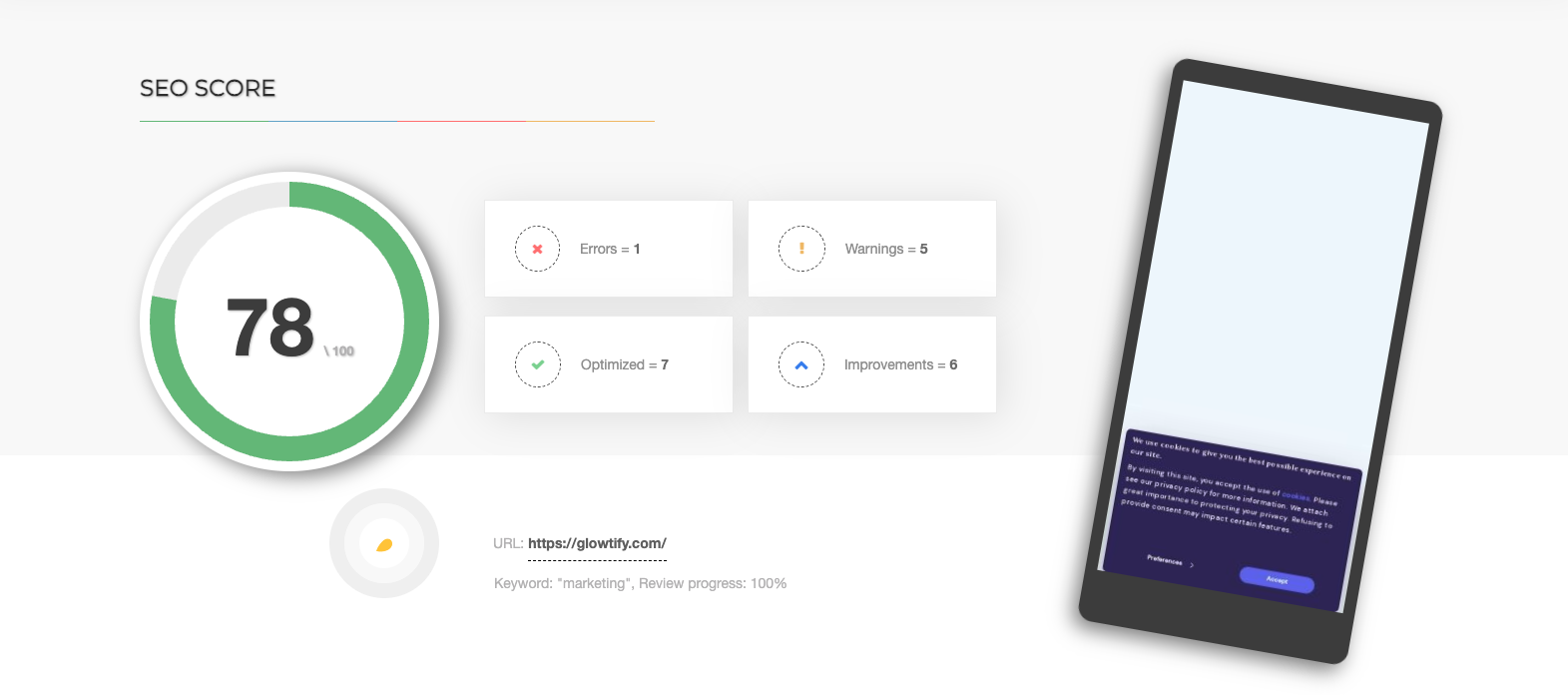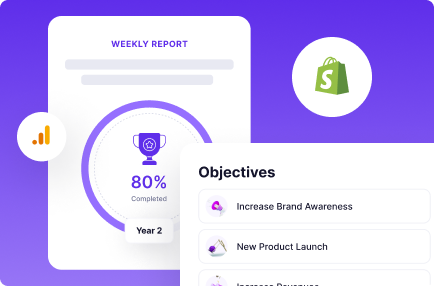Table of Contents
In the rapidly evolving digital landscape, ecommerce has emerged as a vital component of business strategy. The ease of online shopping, combined with the far-reaching capabilities of digital marketing, has created a realm of opportunities for businesses to connect with customers and scale their operations. However, to effectively leverage these opportunities, it is critical to craft and implement a robust ecommerce marketing plan, a blueprint that guides your online activities towards achieving desired business goals.
This article aims to provide an in-depth guide on building and executing a successful ecommerce marketing plan. From understanding your target audience and setting clear objectives to developing a comprehensive marketing strategy and analyzing results, each aspect of your plan will be explored in detail. We will discuss practical tools, strategies, and insights that can be incorporated to drive traffic, increase conversions, and build a loyal customer base. Whether you’re just beginning your ecommerce journey or looking to refine your existing marketing plan, this article offers valuable insights to navigate the dynamic ecommerce landscape.
Planning a Winning Ecommerce Marketing Plan
Crafting a successful ecommerce marketing plan is a strategic move in today’s competitive digital environment. It’s not just about outlining promotional tactics, but meticulously planning how your brand will connect with potential customers online. A robust ecommerce marketing plan propels business growth, sharpens your competitive edge, and gives direction to all your marketing efforts. Today, we will delve into the key components of planning a triumphant ecommerce marketing plan that can transform your business trajectory. So, let’s explore the path to successful execution and unleash the full potential of your ecommerce marketing plan.
1. Understanding Your Target Audience
Successful ecommerce marketing begins with a thorough understanding of your target audience. This involves clearly defining who your customers are, conducting comprehensive market research, and constructing detailed buyer personas. Each of these steps provides a layer of insight that hones your marketing efforts and optimizes your customer reach.
Defining Your Target Audience
The first step in developing a marketing plan is defining your target audience, which involves understanding the demographic and psychographic characteristics of your potential customers. This includes aspects such as age, gender, location, occupation, and income level, which form the demographic profile. It’s equally crucial to comprehend their interests, preferences, attitudes, lifestyle, and values, which constitute the psychographic profile.
Moreover, an understanding of your target audience goes beyond knowing their demographic and psychographic profiles. It involves comprehending their behavior, what motivates them, their preferences in product features, their buying behavior, and what type of marketing communication they respond to best. With a precise definition of your target audience, you can craft marketing strategies that resonate and appeal directly to them, thereby increasing the effectiveness of your marketing efforts.
Conducting Market Research
Once you have defined your target audience, the next step is conducting market research. This process involves gathering, analyzing, and interpreting data about your target market, the demand for your products or services, and the specific needs and behaviors of your customers. You can collect this data through surveys, focus groups, interviews, observations, and using online tools like Google Trends, social media analytics, or customer reviews and feedback.
Market research also allows you to keep up with market trends and the competitive landscape. It can give you insights into your competitors, what they are doing well, and where gaps in the market might exist that your business can fill. Understanding these elements will enable you to spot opportunities for growth and prepare for potential challenges, giving your business a competitive edge.
Creating Buyer Personas
With a well-defined target audience and a wealth of market research data at your disposal, you can now create buyer personas. A buyer persona is a semi-fictional character that represents a segment of your target audience, built from the data and insights you’ve gathered. Each persona should include demographic information, behavior patterns, motivations, and goals.
Buyer personas are not merely static profiles; they should be used to inform every aspect of your ecommerce marketing plan. They can guide the development of your product or service, dictate the tone and content of your messaging, and even influence your marketing channels and tactics.
For example, if one of your personas is a busy professional, consider employing email marketing and mobile advertising, as these channels can be accessed easily during breaks or on commutes.
2. Setting Goals and Objectives
In the world of ecommerce, the importance of setting clear goals and objectives cannot be overstated. They are the roadmap that guides your marketing efforts and serves as the standard against which your success can be measured.

Establishing Measurable Goals
A critical first step in any ecommerce marketing strategy is the establishment of SMART goals – goals that are Specific, Measurable, Achievable, Relevant, and Time-bound. The SMART framework helps to avoid vague or broad objectives, ensuring that each goal is well-defined and directly contributes to your overall strategy. The ability to measure progress towards these goals over a specific timeline allows for real-time assessment and adjustment of strategies.
Consider an ecommerce business aiming to expand its customer base. Instead of setting a vague goal such as “attract more customers,” a SMART goal would be “Attract 1000 new customers from the 18-25 age demographic within the next six months.” This goal is not only specific but also measurable, achievable (assuming the market size is sufficiently large), relevant to business growth, and time-bound.
Defining Key Performance Indicators (KPIs)
Once you’ve set your SMART goals, the next step is to define the Key Performance Indicators (KPIs) you’ll use to measure progress. KPIs are specific, quantifiable measures that allow you to track the effectiveness of your marketing strategies and identify areas for improvement. They are the pulse of your marketing campaign, delivering crucial insights on whether your efforts are on track to meet your goals.
For example, if your goal is to “Increase website traffic by 30% over the next quarter,” your KPIs might include daily website visits, bounce rate, average session duration, or pages per session. If your KPIs are not tracking toward your goal, it’s an indication that your strategies need to be adjusted or revamped.
Aligning Goals with Overall Business Objectives
The final step in this process is ensuring your marketing goals align with your broader business objectives. While your marketing plan has its specific set of goals, they must contribute and direct progress toward your overall business vision. If they don’t, your marketing efforts, while possibly successful in isolation, may not have the desired impact on your business.
For example, if your business objective is to “Become the leading provider of eco-friendly apparel in the region,” your marketing goals could include “Increase awareness about our eco-friendly product range by 50% within a year” or “Boost sales of eco-friendly products by 30% in the next six months.” The alignment ensures that every marketing dollar and effort spent contributes to moving your business forward in its broader mission.
3. Crafting a Strong Brand Identity
In the dynamic and competitive world of ecommerce, having a strong brand identity can be the difference between being remembered or forgotten. It’s not just about having a catchy name or a unique logo; it’s about your brand’s complete persona in the minds of your customers.

Developing a Compelling Brand Story
At the heart of every successful brand is a story. Your brand story is more than just a narrative; it’s the essence of why your brand exists and the values it stands for. It humanizes your brand, making it relatable and memorable, and it helps your customers understand and connect with what you do beyond the products or services you offer.
A compelling brand story is authentic, meaningful, and resonates with your audience. It could be the journey of how your brand came to be, the problem you aim to solve, or how your products make a difference in the customers’ lives. For example, TOMS Shoes built its brand around the story of providing a pair of shoes to a child in need for every pair sold. This story isn’t just compelling; it gives customers a powerful reason to choose TOMS over another shoe company.
Creating a Memorable Brand Name, Logo, and Visuals
Visual elements like your brand name, logo, and design themes play a pivotal role in your brand identity. They are often the first impression potential customers have of your brand, and you want it to be a memorable one. Your brand visuals should be unique, engaging, and convey the essence of your brand story and values.
The process of creating these visuals involves choosing a brand name that’s distinct and easy to remember, designing a logo that visually represents your brand, and establishing a color scheme and design theme consistent with your brand persona. For instance, Apple is known for its minimalistic design and sleek aesthetics, which aligns perfectly with their brand story of innovation and sophistication.
Maintaining Consistent Branding Across All Channels
In today’s digital age, your brand is likely to have a presence on various platforms, from your ecommerce website and social media to email campaigns and physical packaging. Maintaining a consistent brand identity across these channels is crucial. Consistency strengthens brand recognition, builds trust with your audience, and reinforces your brand story and values.
Brand consistency involves more than just using the same logo or color scheme everywhere. It includes maintaining a consistent tone of voice in your messaging, providing a uniform customer experience, and reinforcing your brand values in every interaction. For example, Coca-Cola’s branding is consistent across all platforms; from their use of color and logo to their messaging and voice, you instantly recognize it as Coca-Cola.
4. Choosing the Right Ecommerce Platforms and Technologies
the technology and platforms you choose can greatly impact your ecommerce success. They form the infrastructure on which your ecommerce business operates, and as such, their selection requires careful consideration. Today, we will discuss how to evaluate different ecommerce platforms, assess the need for additional tools and technologies, and the importance of integrating marketing tools and analytics platforms.

Evaluating Different Ecommerce Platforms
An ecommerce platform is essentially the central hub of your online business, serving as the virtual storefront where customers can browse and purchase your products or services. Selecting the right platform is a pivotal decision, as it influences your online store’s functionality, appearance, and user experience. Various ecommerce platforms offer different features, each with unique benefits and drawbacks, and choosing the most suitable one for your business requires careful evaluation.
Choosing the Perfect Fit: Shopify, WooCommerce, or Magento?
Consider your business needs, budget, technical expertise, and growth plans when evaluating ecommerce platforms. For instance, a user-friendly platform like Shopify might be ideal for small businesses or startups without much technical expertise. It provides an all-in-one solution, offering web hosting, security, and a plethora of templates and plugins.
On the other hand, WooCommerce would be an excellent choice for businesses using WordPress websites, as it integrates seamlessly and offers robust flexibility and customization. For larger businesses seeking extensive features and scalability, Magento could be a preferred option. However, Magento often requires a higher level of technical proficiency and might have higher costs.
Finding the Right Tools: CRM, ERP, and Marketing Automation
To manage various aspects of your business, like inventory management, customer support, marketing, or accounting, you may need additional tools and technologies. These tools can automate and streamline processes, helping your business operate more efficiently and effectively.
The requirement for these additional tools will depend on the nature and scale of your business. A small business might manage its inventory manually or through basic excel sheets, while a larger business might need a comprehensive ERP (Enterprise Resource Planning) system to manage various facets of its operations.
Similarly, managing customer relationships could be manual for a small operation, but a growing business might benefit from a CRM (Customer Relationship Management) system like Salesforce or Zoho CRM. Tools like Mailchimp for email marketing or Hootsuite for social media management could also be essential for a robust marketing strategy.
Executing an Ecommerce Marketing Plan
Executing your ecommerce marketing plan is of utmost importance as it is the gateway to turning your strategies into tangible outcomes. It is through execution that you bring your marketing ideas to life, engage with your target audience, and drive conversions. Successful execution allows you to establish a strong online presence, build brand awareness, and ultimately boost sales and revenue. By implementing your plan effectively, you position your business for success in the competitive ecommerce landscape, creating opportunities for growth and long-term sustainability.
1. Developing a Comprehensive Marketing Strategy
A well-executed, comprehensive marketing strategy forms the backbone of a successful ecommerce business. It integrates multiple channels and techniques to captivate your target audience, wherever they may be. These strategies include:

Identifying the Most Effective Marketing Channels
Successful ecommerce businesses don’t rely on a single marketing channel. They utilize a mix of different channels to reach their target audience where they spend their time. The selection of these channels depends on your target audience, their preferences, and where they’re most likely to interact with your brand.
Potential marketing channels include organic search, paid search, social media, email, and content marketing. An effective way to select channels is to understand your audience’s behavior and preferences. For instance, if your audience primarily consists of millennials, Instagram and YouTube might be effective channels, whereas, for a B2B company, LinkedIn and email marketing might be more suitable. It’s important to assess the effectiveness of each channel periodically and adjust your strategy based on the results.
Utilizing Search Engine Optimization (SEO) Strategies
SEO is a non-negotiable part of any ecommerce marketing plan. By optimizing your website and content for search engines, you increase your visibility on organic search engine results. This drives unpaid traffic to your website, boosting your chances of converting these visitors into customers.
Implementing effective SEO strategies involves on-page and off-page activities. On-page SEO includes optimizing your website’s metadata, headers, content, and images for relevant keywords. Off-page SEO involves building high-quality backlinks to your website. Remember that SEO is a long-term strategy, and while the results may not be immediate, the benefits it brings in terms of organic traffic and brand visibility are significant.
Implementing Content Marketing Tactics
Content marketing helps attract and engage your audience by providing them with valuable and relevant information. A well-executed content marketing strategy can build trust, establish your brand as an industry expert, and encourage your audience to make a purchase decision.
Creating a successful content marketing strategy involves identifying topics that your audience cares about, creating high-quality content around these topics, and distributing it effectively. Content can take various forms, such as blog posts, videos, infographics, webinars, or ebooks. For example, a health supplements ecommerce brand might create blog posts about different fitness regimes, videos demonstrating exercises, and infographics about the benefits of different vitamins.
Leveraging Social Media Marketing
Social media is a powerful marketing tool that lets you reach billions of users worldwide. It allows you to connect with your audience on a more personal level, engage them with exciting content, and promote your products organically or through paid advertising.
A well-rounded social media strategy involves organic engagement, paid advertising, and community management. Consistently posting engaging content, responding to comments and messages promptly, and running targeted ad campaigns are crucial elements of a successful social media strategy. Each platform serves a unique purpose, and the platform mix should be chosen based on where your audience spends their time online.
Exploring Influencer Partnerships
Influencer marketing is the digital age’s word of mouth. Brands can leverage the reach and credibility of influencers to enhance brand awareness, gain trust, and drive sales.
Finding the right influencers who align with your brand values and have a following that matches your target audience is crucial. The partnership can take various forms – product reviews, sponsored posts, giveaways, or long-term brand ambassador roles. The key to successful influencer marketing is authenticity, so ensure your influencers resonate with your brand and genuinely connect with their audience.
Incorporating Email Marketing Campaigns
Despite the rise of various marketing channels, email marketing remains one of the most effective ways to reach and engage your audience. It allows you to send personalized messages directly to your audience, enhancing the connection between your brand and its customers.
Successful email marketing requires well-crafted emails sent to segmented lists at optimal times. From welcome emails, newsletters, and promotional emails to cart abandonment reminders and post-purchase follow-ups, there are many ways to use email marketing to engage your audience. Additionally, it’s important to regularly test and optimize your emails for better performance.
2. Implementing Conversion Rate Optimization (CRO) Strategies
Conversion Rate Optimization (CRO) is a vital component of any ecommerce marketing plan. It focuses on optimizing your ecommerce website and marketing initiatives to increase the percentage of visitors who complete a desired action, such as making a purchase or signing up for a newsletter. Here are some key strategies for implementing CRO:

Optimizing Website Design and User Experience
Website design directly impacts a user’s first impression of your brand. A well-designed, aesthetically pleasing website can attract visitors, keep them engaged, and encourage them to explore your product offerings. It isn’t just about appearances, though. Good website design improves navigation, making it easier for visitors to find what they’re looking for, which can ultimately lead to higher conversion rates.
User experience (UX) encompasses all aspects of a user’s interaction with your website, from usability and accessibility to efficiency and satisfaction. When your website is easy to navigate and intuitive, users are more likely to stay longer and take the desired action. For instance, clear and visible call-to-action (CTA) buttons can guide users to complete a purchase, while a well-organized product catalogue can make the shopping experience enjoyable and effortless.
Streamlining the Checkout Process
The checkout process is the final step in converting a visitor into a customer. However, a complicated or lengthy checkout process can lead to cart abandonment. Streamlining the checkout process is therefore crucial for improving conversions.
To optimize the checkout process, consider reducing the number of steps required to complete a purchase. Enable guest checkout to accommodate users who prefer not to register an account. Providing multiple payment methods caters to different customer preferences and can prevent lost sales. Finally, reassuring customers about the security of their personal information can increase trust and reduce cart abandonment.
Incorporating Persuasive Product Descriptions and Imagery
Product descriptions should go beyond merely listing product features. Instead, they should focus on the benefits the product offers to the customer, addressing their needs and desires. A compelling product description can help the customer imagine how the product will enhance their life, leading them closer to a purchase decision.
High-quality product images can greatly influence a customer’s purchase decision. They allow customers to see the product in detail, providing a sense of transparency and trust. Offering multiple images from different angles, as well as in-context shots, can provide a more comprehensive understanding of the product. Additionally, utilizing video can be a powerful way to demonstrate the product’s features and benefits.
Implementing A/B Testing for Continuous Improvement
A/B testing involves comparing two versions of a webpage or other element to see which performs better. It’s a crucial tool for CRO as it enables you to make data-driven decisions about changes to your website or marketing strategy.
When conducting A/B testing, only one element should be tested at a time to ensure the results are accurate. This could be anything from a headline, product description, image, or CTA. Once you’ve determined which version results in higher conversions, that version can be implemented permanently. Regular A/B testing allows for continuous improvement and optimization of your ecommerce strategy.
3. Analyzing and Measuring Results
A critical component of a successful ecommerce marketing plan is the ability to analyze and measure results. This analysis not only helps determine the effectiveness of your marketing strategies but also identifies areas for improvement. It’s essential to track key marketing metrics, use web analytics tools, and make data-driven adjustments based on performance insights.

Tracking and Analyzing Key Marketing Metrics
Every digital marketing effort produces data, which, when effectively analyzed, serves as a roadmap for future marketing plans. Tracking key marketing metrics is crucial in gauging the success of your efforts, understanding customer behavior and preferences, and making necessary adjustments to your strategies. It is these numbers that provide you with objective evidence of your marketing initiatives’ success or need for improvement.
Selecting the right metrics to monitor requires a thorough understanding of your business goals. Not every metric will be relevant to your unique context. For instance, if your primary goal is increasing website traffic, metrics like unique visitors and page views might be your focus. On the other hand, if customer retention is your aim, metrics, like repeat customer rate and customer lifetime value, should be your key focus. Over time, monitoring these metrics can reveal trends, provide critical performance insights, and help drive decision-making.
Using Web Analytics Tools for Data-Driven Decision Making
Web analytics tools play a pivotal role in any ecommerce business. These tools capture, measure, and analyze data from your website to provide insights into your website’s performance and your customers’ behavior. From tracking customer journey to understanding which pages engage users the most, these tools provide a plethora of data that is critical to making informed decisions about your marketing strategies.
Several tools are available to ecommerce businesses for web analytics. Google Analytics, for example, is a widely used tool offering insights about your website’s traffic sources, user demographics, user behavior, and conversion metrics. Tools like Hotjar go a step further by providing visual representations such as heatmaps and session recordings, which can offer deeper insights into user interaction on your site. Leveraging these tools helps turn data into action, enabling you to optimize your strategies for better results.
Making Adjustments Based on Performance Insights
The landscape of digital marketing is always changing. As customer behaviors, market trends, and competitor tactics evolve, so too must your marketing strategies. This makes it necessary to constantly review performance insights and make necessary adjustments to your marketing plan. It’s not about setting and forgetting but rather continually iterating and improving.
Performance insights serve as a guide, highlighting the strengths and weaknesses of your current marketing plan. If a particular campaign is underperforming, analysis might show that you need to tweak the messaging or targeting. If your conversion rates are low, perhaps your website’s user experience needs enhancement. By turning insights into action, you ensure that your ecommerce marketing strategy remains agile, relevant, and effective.
4. Staying Ahead of Competition and Industry Trends
Success in ecommerce is not only about setting up and executing a plan—it’s also about staying informed and adaptable to the ever-changing digital landscape. This final segment discusses three strategies that are key to keeping your ecommerce business competitive:

Monitoring Competitor Activities
No business operates in isolation. In the highly competitive realm of ecommerce, keeping tabs on your competitors’ activities can be a rich source of strategic insights. By monitoring what they’re doing—be it their marketing strategies, product launches, or customer engagement tactics—you can identify market gaps and opportunities for your business to differentiate itself. This is not about replicating what others are doing, but about understanding the competitive landscape to create a unique and compelling value proposition.
There is a wide range of tools and techniques you can employ to monitor your competitors. SEO tools such as SEMRush or Ahrefs can provide insights into your competitors’ keyword strategies and backlink profiles. Social listening tools can help you track their social media activities, understand their customer engagement, and gauge public sentiment. Regular visits to their websites, blogs, and online stores can also offer valuable insights into their UX/UI, pricing strategies, and more. The key is to use these insights as a launchpad for your strategic planning, not as a blueprint for imitation.
Keeping Up with Ecommerce Industry Trends
The ecommerce industry is known for its rapid pace of change. Technological advancements, shifts in consumer behavior, and the emergence of new platforms and tools can all disrupt the status quo. As an ecommerce business, it’s important to stay informed about these trends to maintain relevance, meet evolving customer needs, and leverage new opportunities as they arise.
There are many resources available for staying up-to-date with industry trends. Regularly reading reputable ecommerce blogs, subscribing to industry newsletters, attending webinars and conferences, participating in online forums and communities—these are all effective ways to stay informed. The next step is analysis: you need to understand how these trends could affect your business, and which ones are worth incorporating into your strategy.
Innovating and Adapting Your Marketing Strategies
Staying competitive in ecommerce goes beyond keeping up—it also requires innovation. This means not just adapting to changes in the market, but also leading change with original and unique strategies. Regularly reviewing and reinventing your marketing strategies keeps your business dynamic and responsive, ensuring you don’t just ride the waves of change, but help to shape them.
Innovation can take many forms: experimenting with new marketing channels, incorporating the latest technologies (like AI, AR/VR), redesigning your website for an enhanced user experience, or even venturing into new product categories. The trick is to maintain a balanced approach—innovating while keeping a keen eye on your core business goals and customer needs. An innovative idea is only as good as its execution and the value it delivers to your customers. So always measure the impact of your innovations and be ready to refine them based on performance data and customer feedback.
Conclusion
Building and executing a winning ecommerce marketing plan is a multifaceted process that requires diligent planning, a detailed understanding of your target audience, setting clear goals and objectives, a strong brand identity, choice of suitable platforms and technologies, and the development of comprehensive marketing and CRO strategies. But, the journey doesn’t end there. To maintain competitiveness and achieve long-term success, it’s crucial to keep a pulse on your performance metrics, continually refine your strategies based on insights, foster strong customer relationships, and stay ahead of industry trends and competition.
However, implementing and managing an effective ecommerce marketing plan can be complex without the right tools and resources. That’s where Glowtify comes in. Glowtify is a free marketing software designed to fuel your marketing strategies and accelerate ecommerce growth. With Glowtify, you can streamline your marketing efforts, track key metrics, and make data-driven decisions to optimize your campaigns and achieve your business goals.
Don’t miss the opportunity to supercharge your ecommerce marketing. Sign up for Glowtify today and unlock the power of actionable insights and data-backed goals. Experience the difference it can make in driving conversions, increasing customer engagement, and propelling your ecommerce business to new heights of success. Take your ecommerce marketing to the next level with Glowtify. Get started now and witness the transformative impact on your business!

Want more SEO traffic?
Discovering the secret to increasing your website’s traffic could be as simple as accessing this Free SEO analyzer tool!
Try it - it's free

